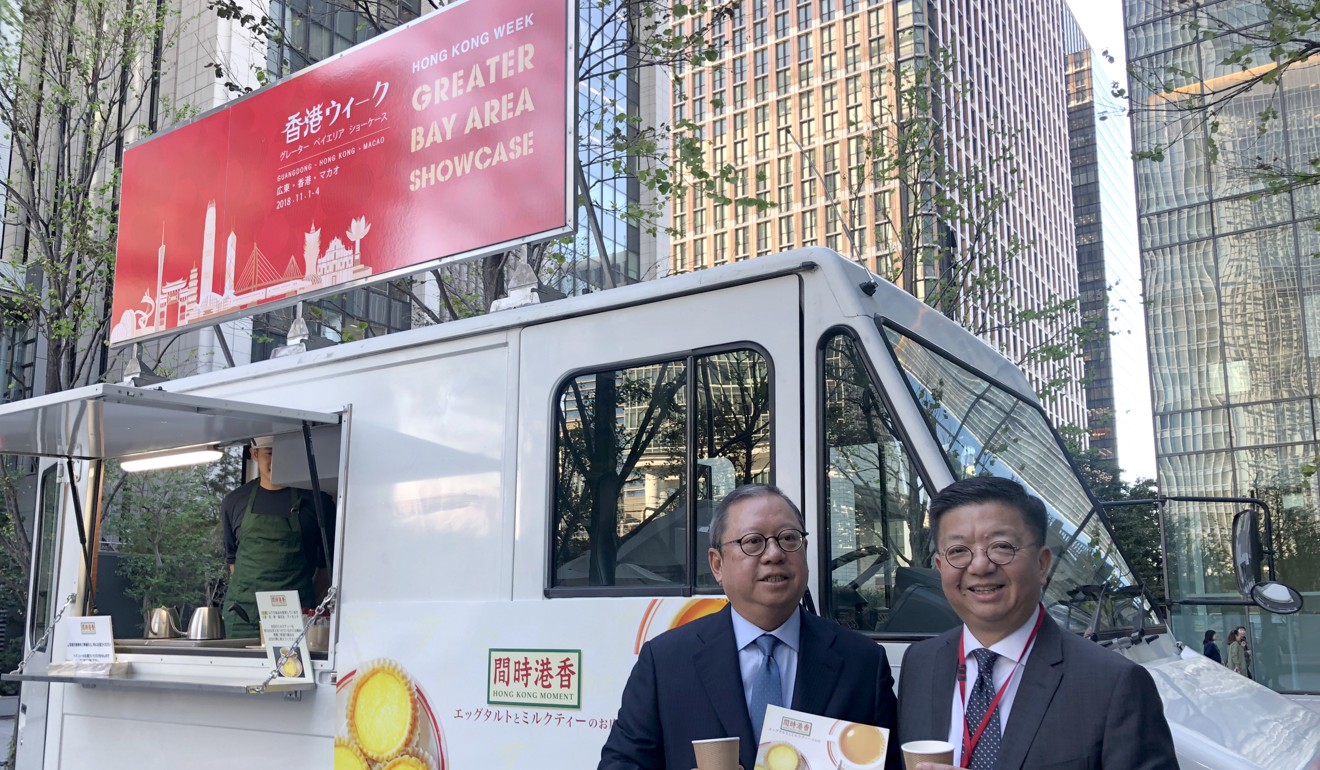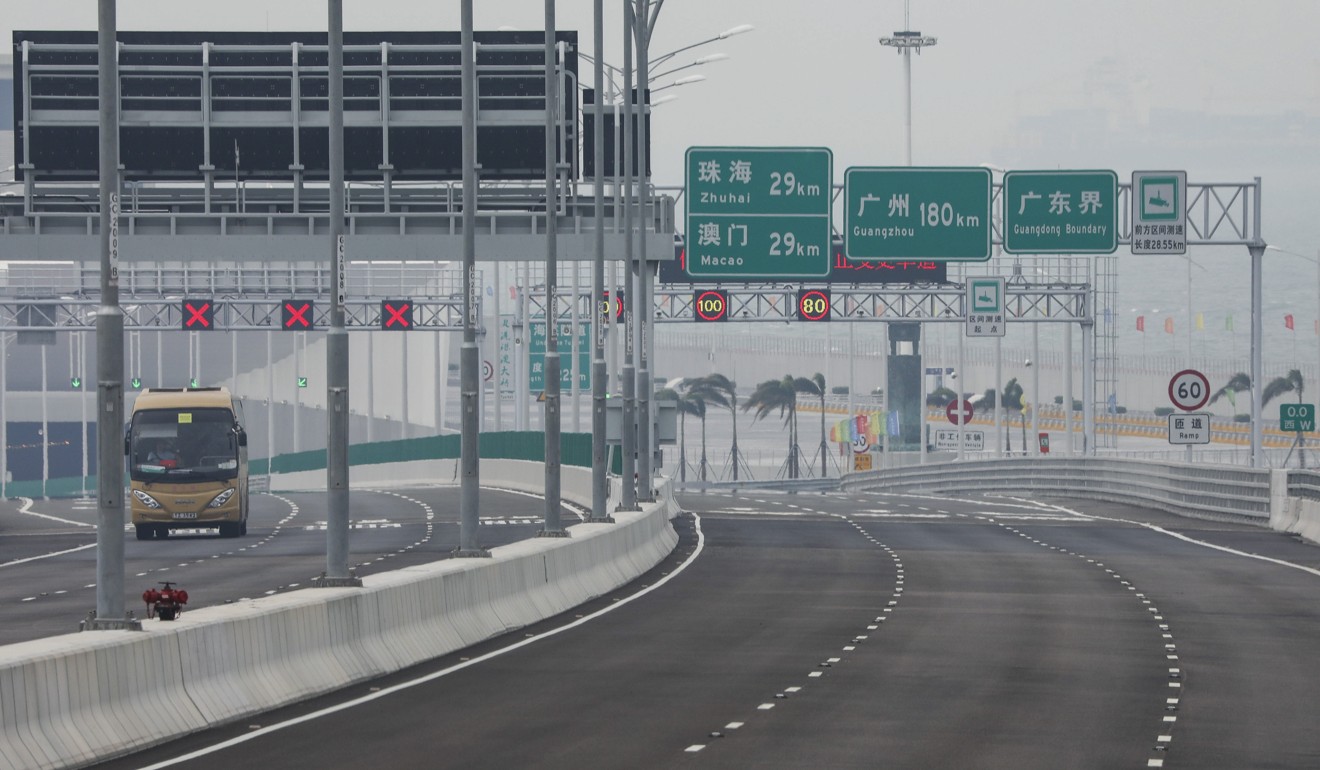
Hong Kong, Macau and Guangdong to set aside tourism rivalry and work together to tempt visitors into staying longer in Greater Bay Area
- Visitors on average spend three days in Hong Kong, says Tourism Board chief Peter Lam
- Traditional rivals to be encouraged to design itineraries to multiple destinations in Greater Bay Area
Hong Kong, Macau and Guangdong province are to cast aside decades of competing for tourists and work together to attract visitors to stay longer, starting with packages to extend visitors’ three-day average stay in the city to five days in the region overall.
“With more convenient transport links, they may stay in the region for a fourth or fifth day. The more tourist spots within close reach, the longer they will stay,” Peter Lam Kin-ngok, chairman of the city’s tourism board said.
Ngong Ping 360 boss sees dawning of new age of tourism for Lantau
Among the ways to make the traditional rivals cooperate, Lam said, would be to encourage tour agents to design itineraries that take in multiple destinations in the “Greater Bay Area” – an integrated innovation and technology hub uniting 11 southern Chinese cities and intended to rival Silicon Valley.
Gianna Hsu, chairwoman of the Hong Kong Japanese Tour Operators Association, said the Greater Bay Area tourism project could generate 5 per cent growth in the number of Japanese visitors to Hong Kong next year.
HK$5 billion Ocean Park hotel on course for 2019 opening after delays
The plan would also benefit from the Guangzhou-Shenzhen-Hong Kong Express Rail Link and the 55km cross-border Hong Kong-Zhuhai-Macau Bridge that opened in September and October respectively and provide much faster travel between the neighbouring cities.

Lam, speaking during a four-day trade show in Tokyo, said the city was aiming to boost its numbers of Japanese tourists and to serve as a base for increased tourism in the region.
“Japanese travellers have shown signs of returning in great numbers to Hong Kong, and they are among the top three groups of visitors after mainland Chinese and Taiwanese,” he said.
In the first 10 months of this year, Hong Kong’s inbound tourists jumped 9.5 per cent to 45.68 million, three-quarters of whom are from the mainland. Japanese nationals accounted for about 2 per cent of the total. The tourism board anticipate the total tourist arrivals in Hong Kong to rise 3.6 per cent to about 60 million this year.
Hong Kong tourism should target those who like the city just the way it is
“Hong Kong has the largest number of international tourists in the Greater Bay Area, which gives us the edge,” Lam said. “They can easily go hiking in Hong Kong, get a gourmet lunch in Shunde and then go gambling in Macau’s casinos, all in one day.”
Macau, which relies heavily on the gambling industry, needs a new source of income while Guangdong wants more international travellers who stay longer and spend more.

Tourism Board executive director Anthony Lau Chun-hon said the Greater Bay Area’s tourism opportunities would throw a lifeline to Hong Kong’s inbound tour agents, who are struggling to reinvent themselves as 93 per cent of inbound tourists travel independently.
“They could offer services for visitors who also want to visit the watchtowers or Unesco World Heritage Site Diaolou in Guangdong,” Lau said.

Guangzhou Travel Services Association president Li Xieju welcomed the plan, which he said could rival similar cooperation between Southeast Asian countries.
“Hong Kong, Macau and Guangdong used to compete with each other,” he said. “Now is the best time to join together and entice overseas travellers away from other regional blocs such as Singapore, Malaysia and Thailand.”
Alex Ip, manager of tour services firm Multinational Travel Group in Macau, said the casino city wanted to leverage Hong Kong’s pool of international travellers for more growth.
Tourists flock to marvel at world’s longest sea crossing
“Macau is tiny,” he said. “Our reliance on the gambling industry is not good for sustainable growth.”
Japan Outbound Tourism Council director, Shoichi Gonda, said Greater Bay Area tourism was “an interesting” strategy, which was similar to the popular travel itinerary of Tokyo, Osaka and Kyoto.
Gonda has seen more Japanese travellers visit Hong Kong in the past couple of years, with most of them coming independently rather than as part of tour groups.
“Hong Kong is a safe place and its welcoming atmosphere attracts Japanese people,” he said. “The trend will continue in the next couple of years.”
Hong Kong is the number three destination for Japanese tourists after South Korea and Taiwan, according to Japanese government statistics. The number of Japanese visitors to Hong Kong last year was 1.23 million – a 12.6 per cent increase on 2016.
Japan-based tour group operator JTB Corp Asia division’s manager, Yoshihide Kusuyama said that, easier access to southern China notwithstanding, Hong Kong would remain the base for travellers with multiple destinations.
He said the bridge itself would not be a tourist attraction, but the access it affords would present “a good opportunity” for the tourism sector next year.
Denise Tsang is reporting from Tokyo.

